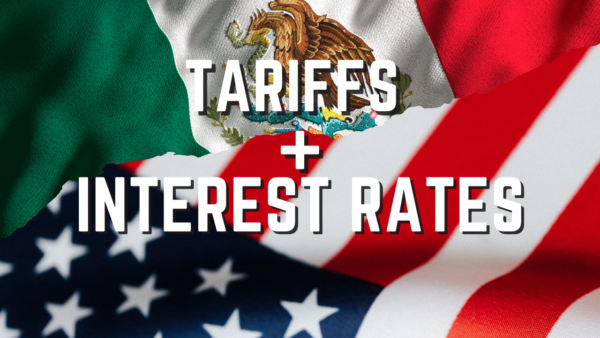Another round of better-than-expected inflation data over the course of July has pushed the Federal Reserve to signal that it will cut the Fed funds rate at its next policy-making meeting on September 18. The signals were sent following the Federal Open Market Committee (FOMC) meeting on July 31.
At least four changes in rhetoric following the July 31 meeting signal that a September easing is likely. First, Chair Powell expressed “growing confidence” that inflation is on a path back toward the FOMC’s 2% target. Second, in its post-meeting statement the FOMC changed its characterization of inflation to “somewhat elevated” from “elevated” in its previous post-meeting statement.
Third, the post-meeting statement cited “further progress” as opposed to “modest further progress” toward lower inflation. Fourth, Powell said the better inflation data seen in the second quarter was “broader” in the sense of encompassing more categories of goods and services than was the case last year. Collectively, these subtle changes in rhetoric provide a clear indication that an easing of policy is likely in September.
Deciphering the Federal Reserve Data
The data that clinched the matter for the Federal Reserve was the June Consumer Price Index (CPI) report, which was released on July 11. It showed consumer prices falling 0.1%, the first decline since May 2020. Excluding food and energy, prices rose less than 0.1%, the smallest increase since January 2021. Moreover, this followed two reassuring CPI reports for April and May.
It should be noted that a run of a few months of good or bad inflation data does not indefinitely settle the path of monetary policy. As Chair Powell likes to say, that path is “data dependent.” Dependent on future data, to be precise. Just as the first three months of 2024 data were misleading in overstating underlying inflationary trends, the most recent three months very likely overstate the progress. Highly volatile categories such as airfares, out-of-town lodging, used cars, and auto insurance have contributed to the noise in recent data.
It is not easy to filter out this noise and extract an accurate signal. Looking at a longer average over half a year can help. This helps to clarify that the downward trend established last year remained in place during the first half of this year. Excluding food and energy, the CPI rose 0.37% per month in the first six months of 2023 but 0.27% in both the second half of last year and the first half of this year.
It is also helpful to examine wage inflation. Key measures of wage inflation, including the Employment Cost Index and average hourly earnings from the employment report, confirm that a downward trend continued in the first half of 2024.
Collectively, the data on wage and price inflation will not only get the Fed to start easing monetary policy in September but also make it likely that a second cut in rates will happen in the fourth quarter. Additional rate cuts are also probable in 2025. The amount of easing in 2025 is data dependent. The most likely outcome is a 25-basis point rate cut each quarter in 2025.
Both wage and price inflation are down substantially from 2021-2022 levels. However, they have not quite returned to pre-COVID levels. The amount of easing over the next two to three years could ultimately depend on whether inflation settles at a level above or below pre-COVID rates.
When the Fed starts to ease monetary policy, it will join a group of central banks that have already begun to cut interest rates. This group includes the Bank of Canada, the Bank of England, and the European Central Bank. They have all cited the trajectory of inflation in justifying their policy adjustments.
Inflation, indeed, has had a strong international component in the past cycle. This undoubtedly reflected the global strains on international supply networks that became apparent after COVID-19. As a result, the ups and downs of inflation in the past five years have been similar across many countries. Not surprisingly, central banks are moving in a fairly synchronous manner—first to tighten policy and now to ease it.





